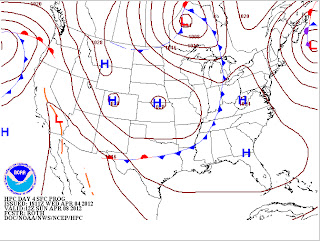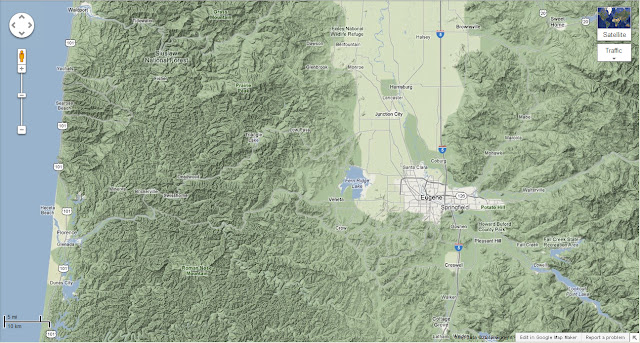Final Blog Post
Eugene, Oregon
The Future of Weather and Climate in Eugene
According to the Intergovernmental Panel on Climate Change, the future of weather and climate in many regions of the world is fairly grim and dire. Eugene is no exception. The West Coast of the United States is one of the few areas in the nation the IPCC predicts will not warm as drastically as the rest of the nation. The IPCC predicts Eugene will warm about 3-3.5 degrees Celsius (5.4-6.3 degrees Fahrenheit) by the late 21st century. The IPCC also suggests precipitation will shift dramatically as well, with more precipitation being present in the winter months, and less in the summer months. Depending on the extent of change present within the precipitation patterns, precipitation may end up balancing out on an annual basis, and only changing seasonally. The IPCC predicts an increase in tropical cyclone intensity, and a poleward shift of extra-tropical storm tracks, which may impact Eugene with stronger storms reaching farther north. Eugene is typically not susceptible to tropical storms or hurricanes, but may see storms with stronger sustained winds, increased precipitation, and a shift in temperature patterns, further aggravating storms because of air mass collisions becoming more violent. The IPCC predicts precipitation events will be more extreme, but less frequent. Flooding may be a true concern in Eugene because it is the lowest point in a valley, at the convergence of two rivers. A widespread significant rain event could potentially flood both rivers and bring large volumes of water to Eugene, ultimately leading to the Pacific Ocean. Ocean rising is not particularly a concern for Eugene, as it is far away enough from the coast, and protected by an elevation of 367ft above sea level.
The city of Eugene has compiled a Community Climate and Energy Action Plan (Click to Access) highlighting many areas of concern given climate change, and the costs associated with climate change. The report focuses on Buildings and Energy, Food and Agriculture, Land Use and Transportation, Consumption and Waste, Health and Social Services, and Urban Natural Resources. Within each category, certain agenda items to mitigate or prevent any adverse effects of climate change or rising energy costs are addressed. The climate change mitigation highlights from the report are as follows:
- For buildings and energy, the city recommends the use of passive systems for heating, cooling, ventilation, and water delivery and will encourage the use of potable water where appropriate.
- For food and agriculture, the city is attempting to reduce use of carbon intensive foods (for growing, transportation, etc.) through education. Eugene is also attempting to increase the amount of diverse weather foods grown in the Willamette Valley in order to sustain extended droughts and wet periods. Eugene is also attempting to use grey water on crops, and is prioritizing vegetable protein crops such as beans and grains.
- For land use and transportation, the city is attempting to create '20 minute' neighborhoods so that residents can walk or bike to gather essential needs. Eugene noted that monitoring population and development is extremely important to mitigation of climate change risks.
- For consumption and waste, the city would like to make picking up waste more efficient, increase the use of renewable materials, and reduce greenhouse gas emissions through municipal activity by purchasing quality goods. Eugene will follow recommendations from the EPA's West Coast Climate Forum to address the highest priority methods to reduce GHG production in waste management.
- For health and social services the city will prepare for long term climate and energy challenges including increased summer drought and increased storm intensity. The city will also ensure all essential services are located within the 100 year flood zone, and mitigate destruction from wildfire risk.
- For urban and natural resources, the city recognizes the importance of natural resources to mitigate the effects of climate change, such as vegetation to provide cooling and absorb CO2. The city plans to preserve and expand natural areas, while also attempting to bring natural resources into the city, such as incentives for residents to plant trees. The city also plans to enhance protections of drinking water sources, and plan for more wildfires.
(Appendix Used May Be Accessed Here)
All information obtained directly from the City of Eugene Community Climate and Energy Action Plan.





























